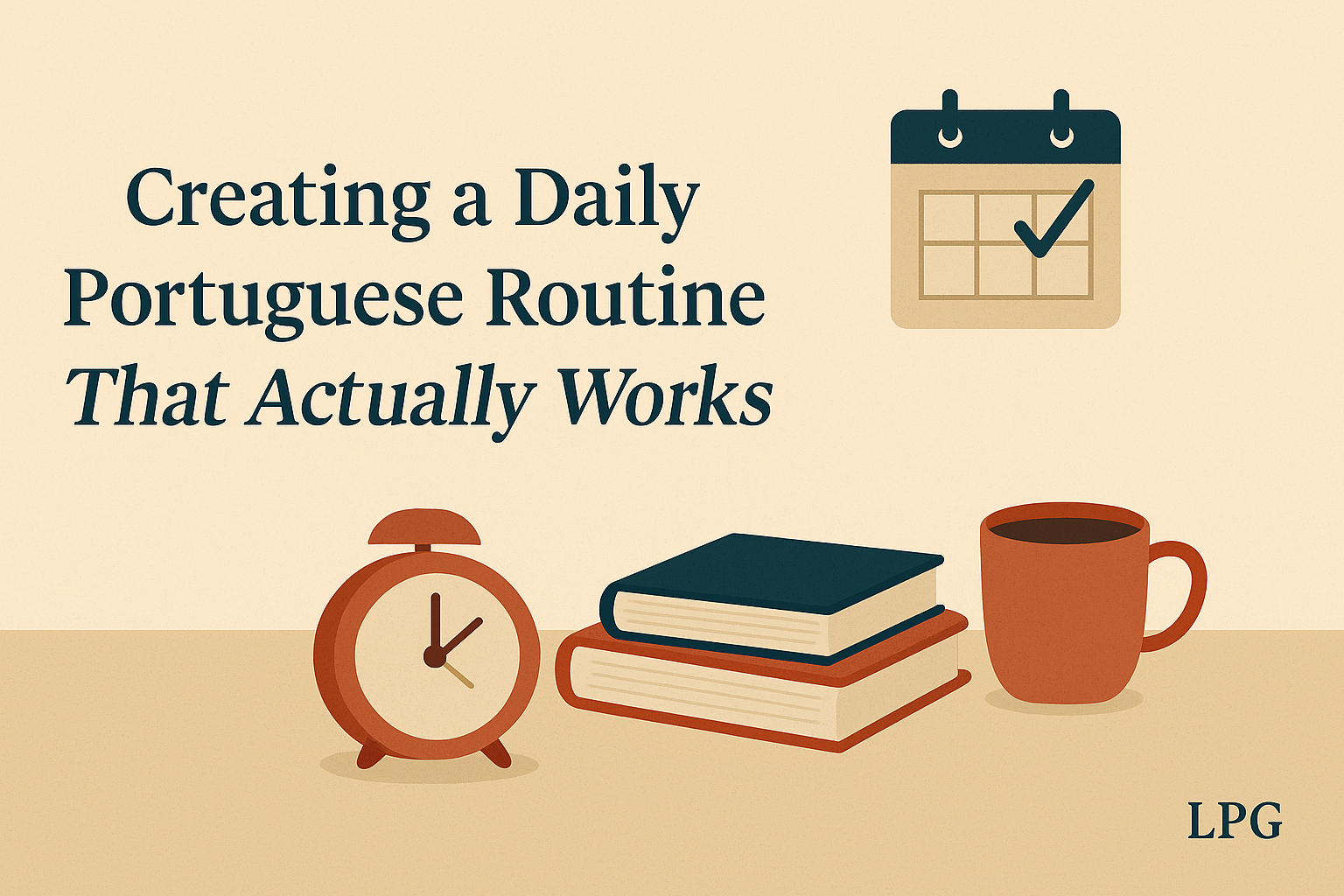
Learning Strategy & Planning
Creating a Daily Portuguese Routine That Actually Works
Learning Portuguese doesn’t require hours a day but it does require consistency.
A lot of learners burn out by overcommitting at the start. The key is building a routine that fits your life, one you’ll actually stick with.
Here’s how to create a flexible, effective daily Portuguese routine.
☀️ Step 1: Set a Daily Goal You Know You Can Hit
Forget “study for 2 hours every day.” Start with something small but meaningful:
- 10 minutes of listening
- 5 flashcards reviewed
- 1 phrase used in conversation
The goal is to build the habit, not win the marathon on day one.
📅 Step 2: Choose a Time Slot That Works Every Day
Consistency is easier when you attach your Portuguese time to another habit:
- While drinking your morning coffee
- During your commute
- Before bed
Same time = less thinking = more action.
🔁 Step 3: Mix Passive and Active Practice
A well-rounded routine includes both:
Passive (input):
- Listening to podcasts
- Watching shows with subtitles
- Reading short articles or Instagram posts
Active (output):
- Repeating what you hear
- Writing a journal entry
- Speaking aloud (even to yourself!)
Even 10–15 minutes of each is enough to make steady progress.
🧠 Step 4: Review, Reflect, Adjust
Each week, ask:
- What part of my routine did I enjoy most?
- What did I skip and why?
- Is this routine helping me feel more confident?
Tweak as needed. Your routine should serve you, not the other way around.
📌 Sample Routine for Busy Beginners
- ☕ Morning (5 min): Review flashcards while drinking coffee
- 🚗 Commute (10 min): Listen to a Portuguese podcast
- 🌙 Evening (10 min): Write 2 sentences in a journal and say them aloud
✨ Final Thoughts
Language learning is about showing up consistently, not perfectly.
Start small. Keep it simple. Build a routine that works for you and stick with it long enough to see it grow.
You’ve got this. Let’s build the habit, one word at a time.